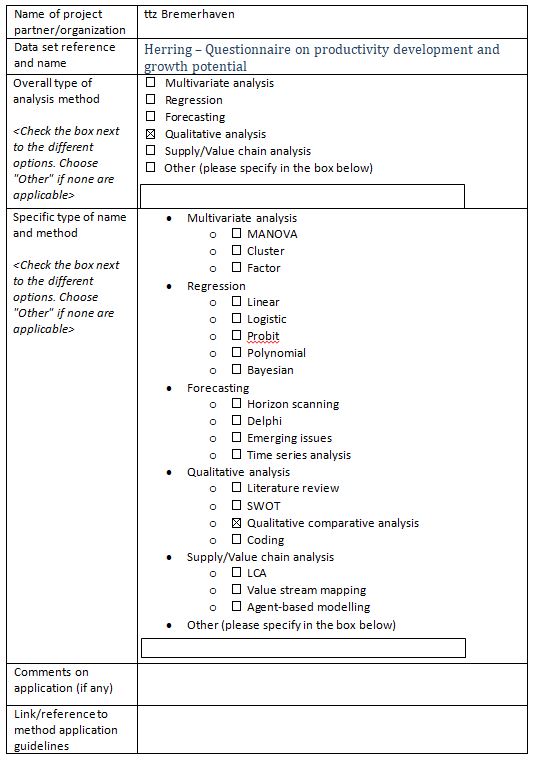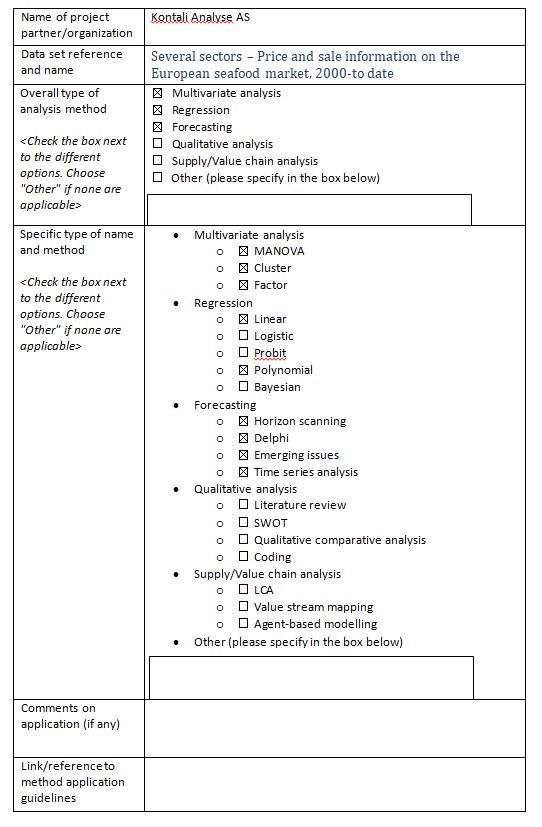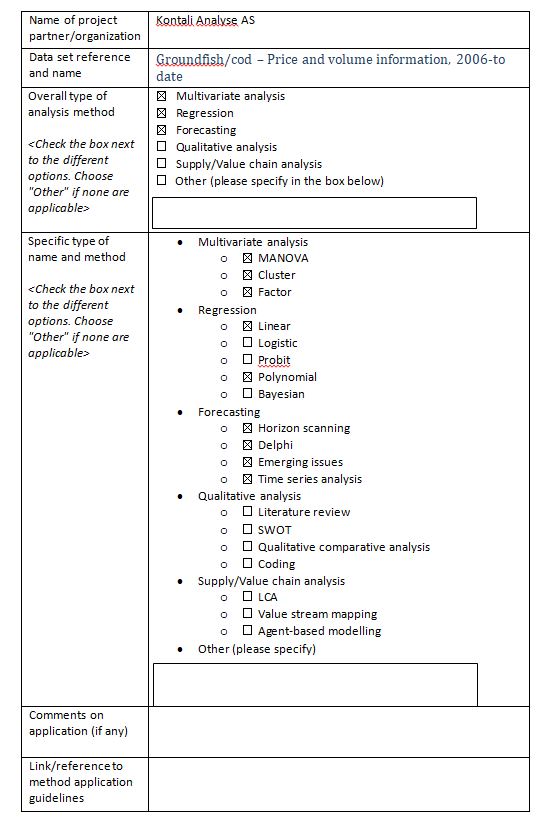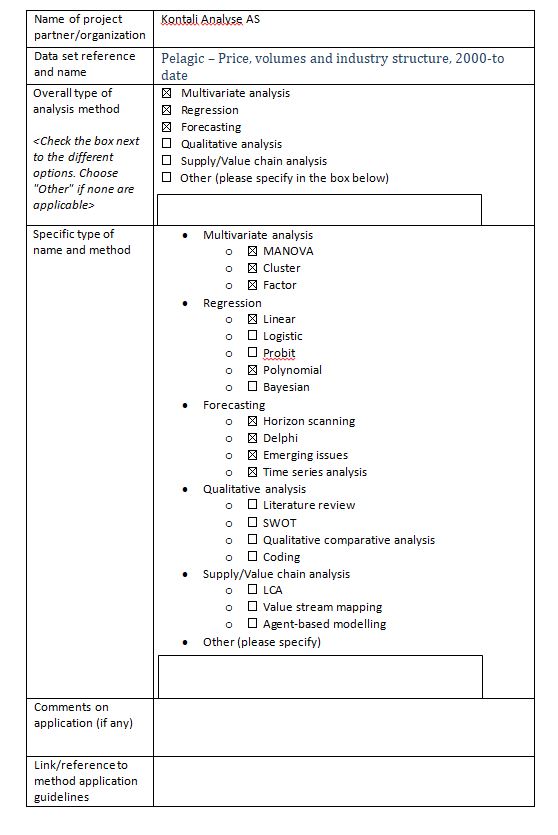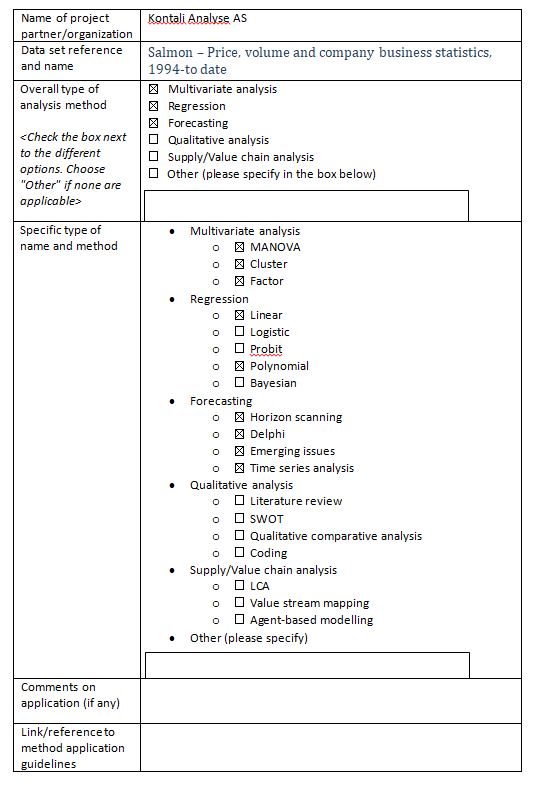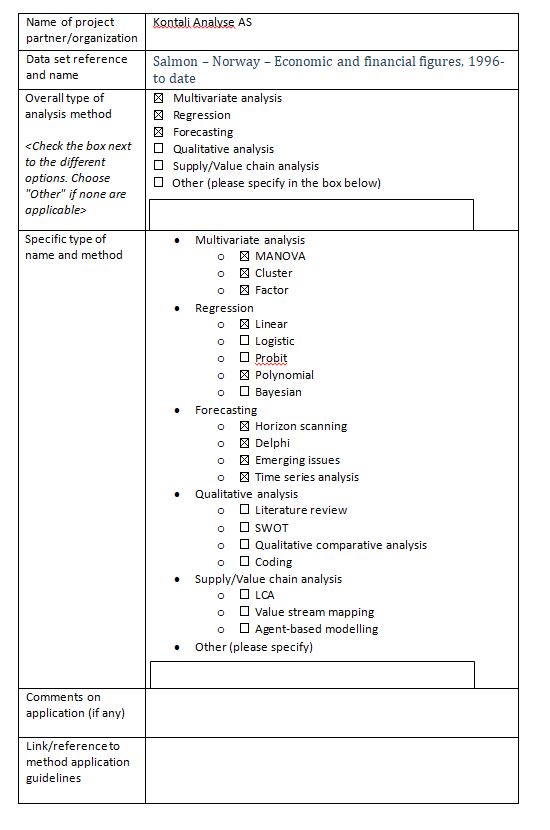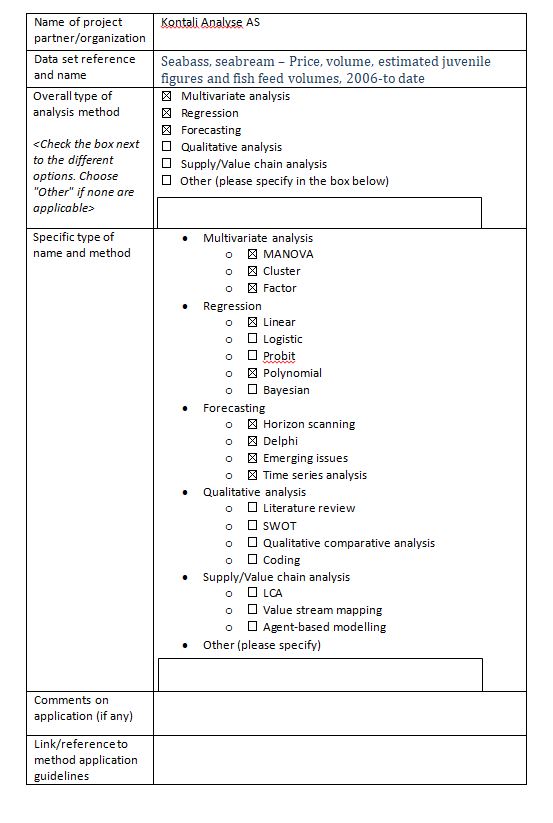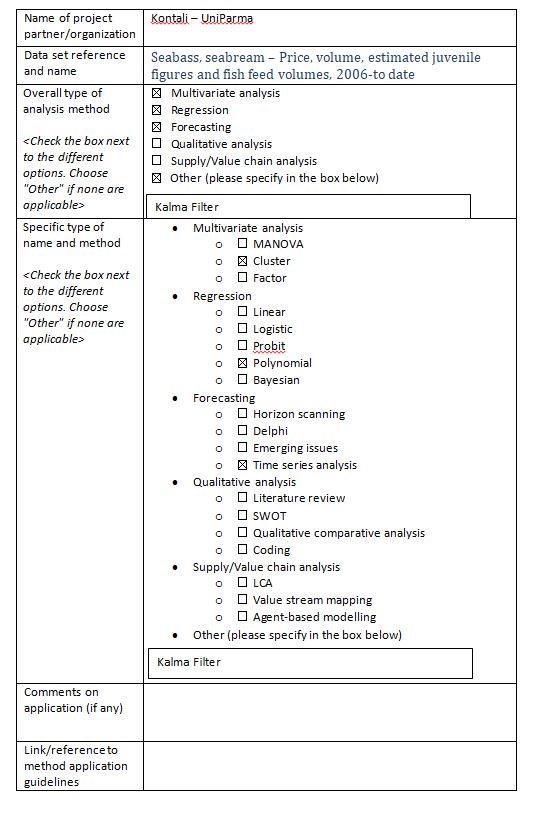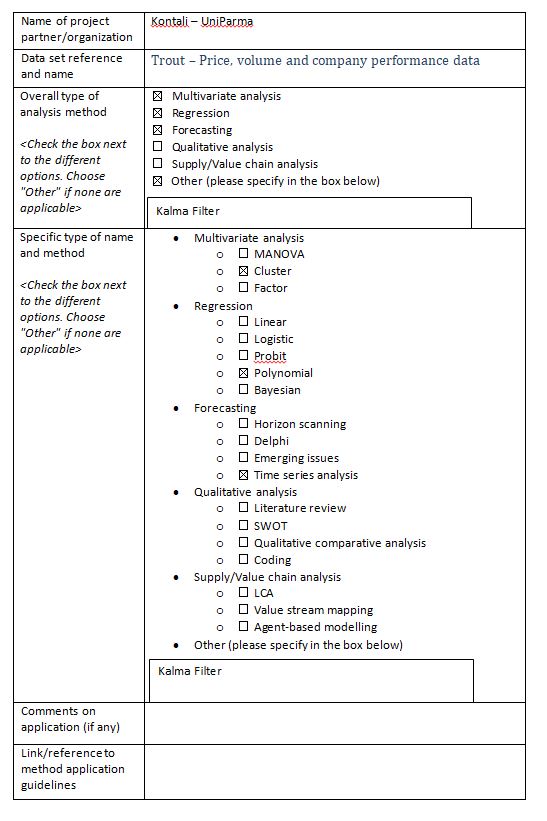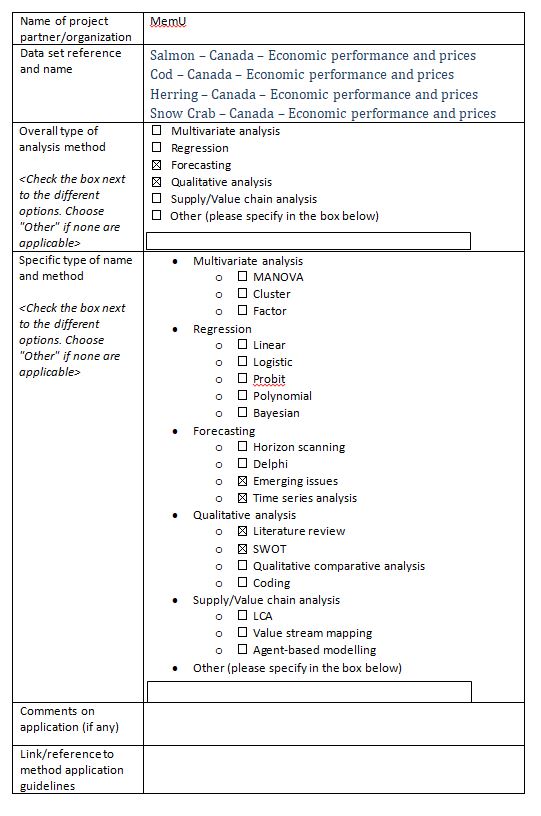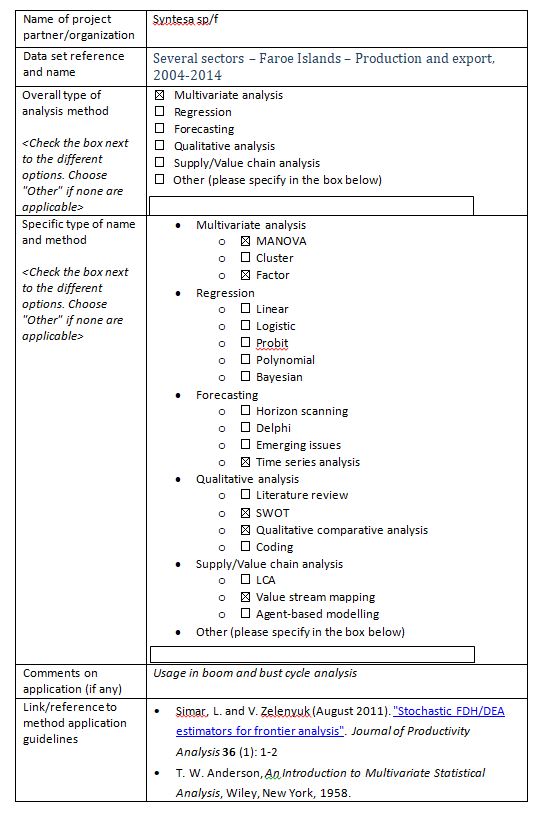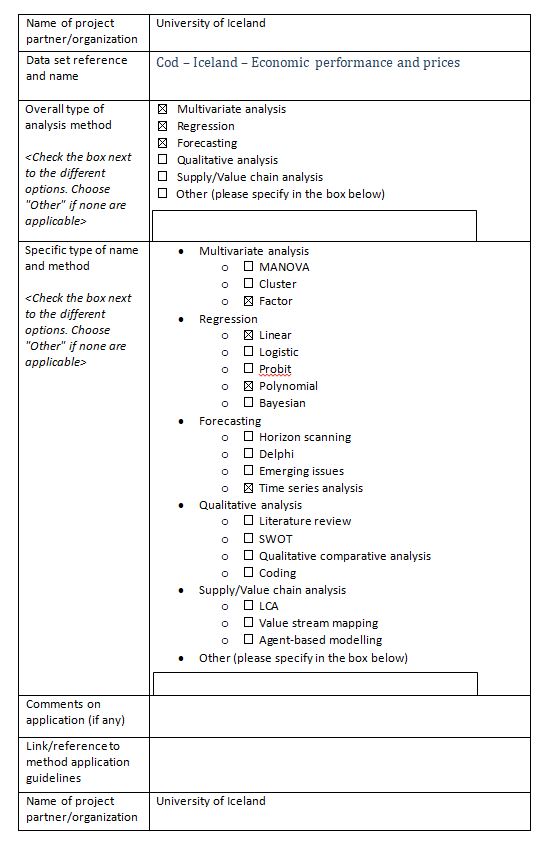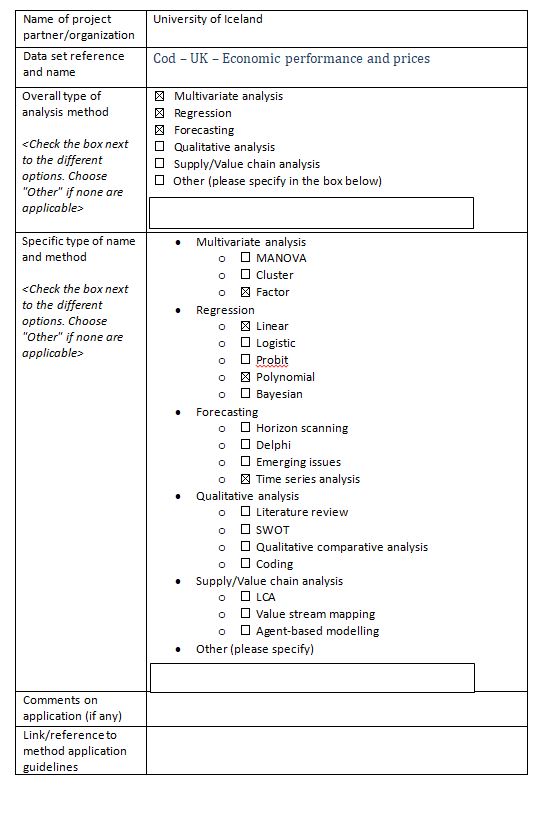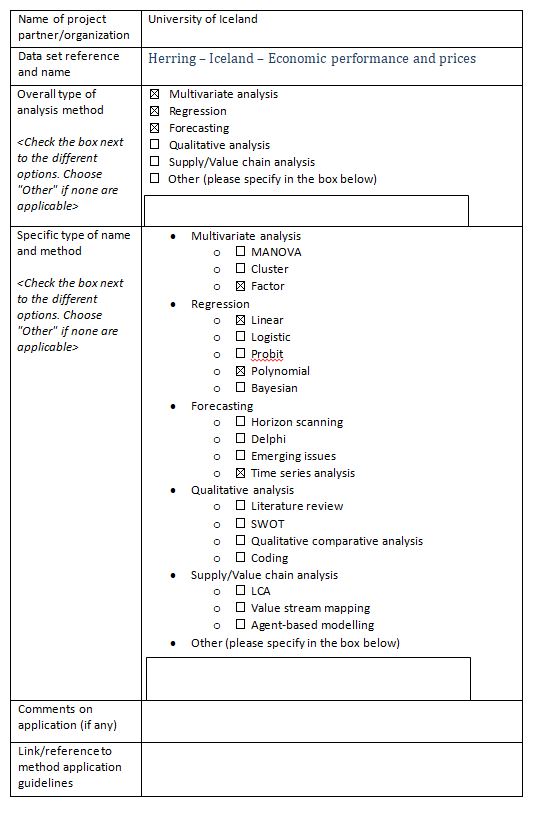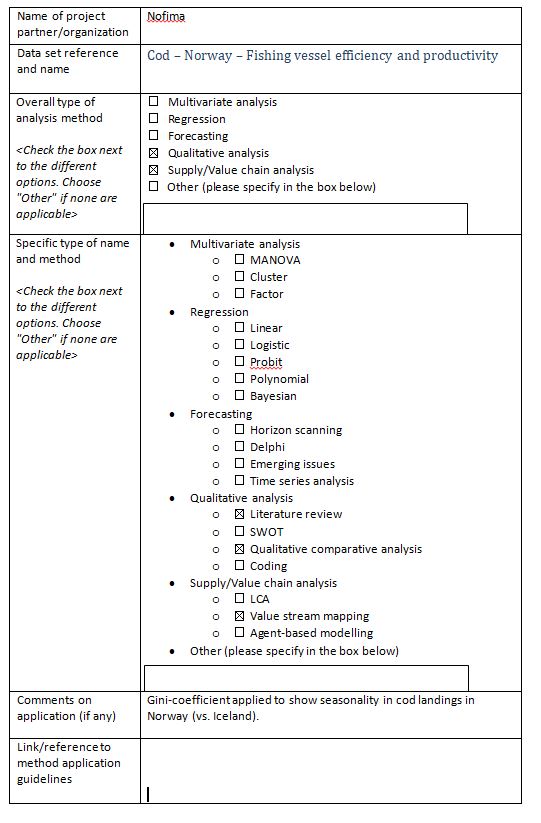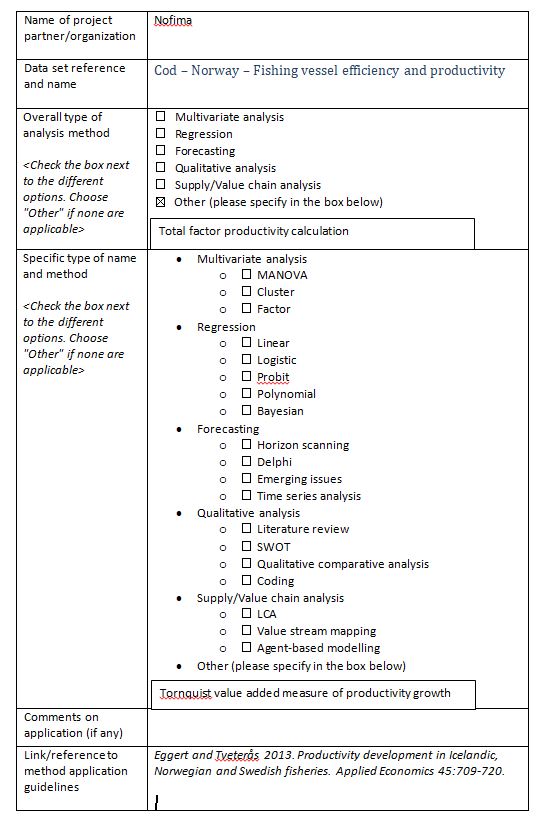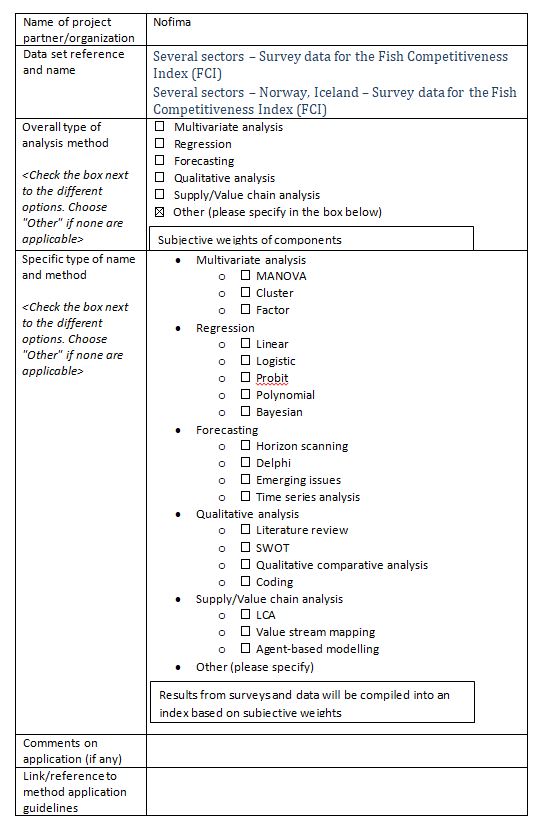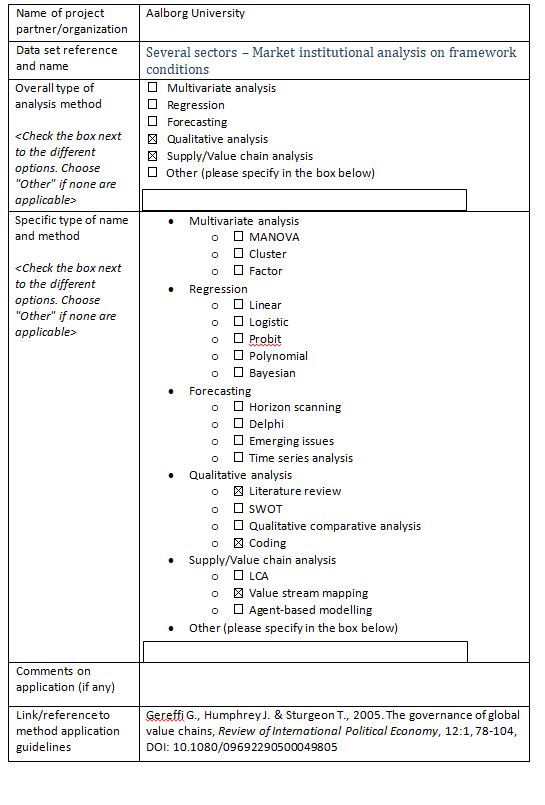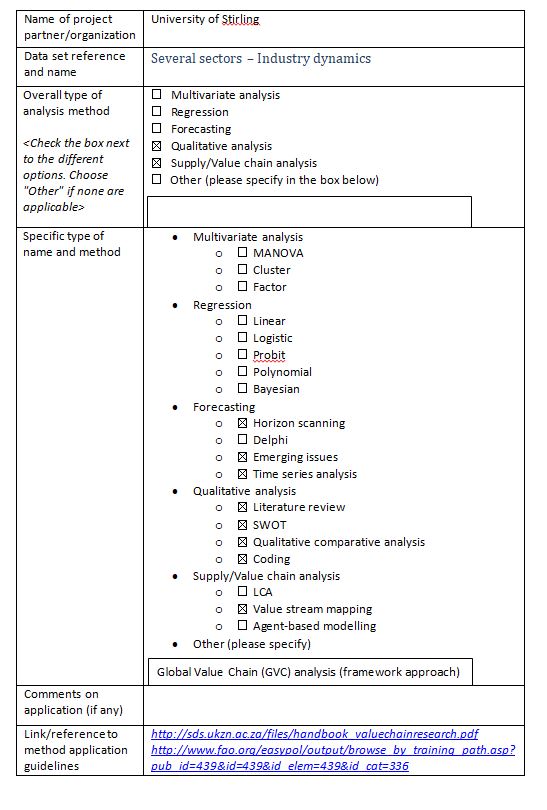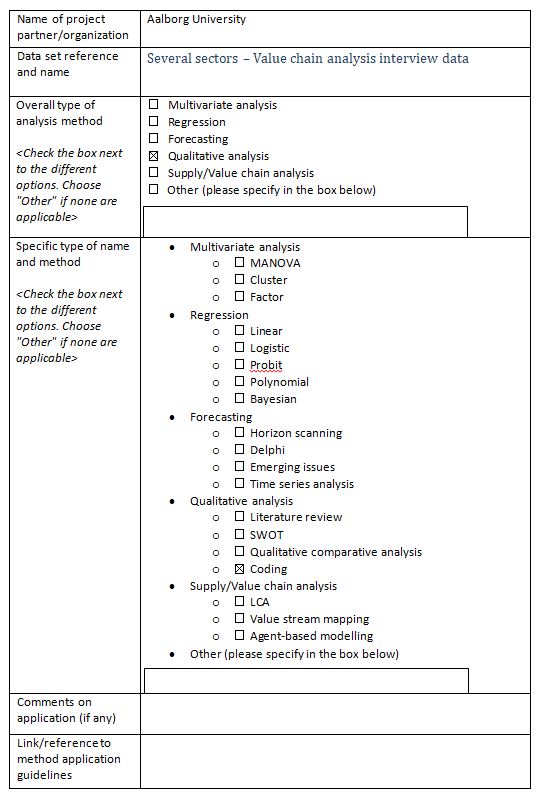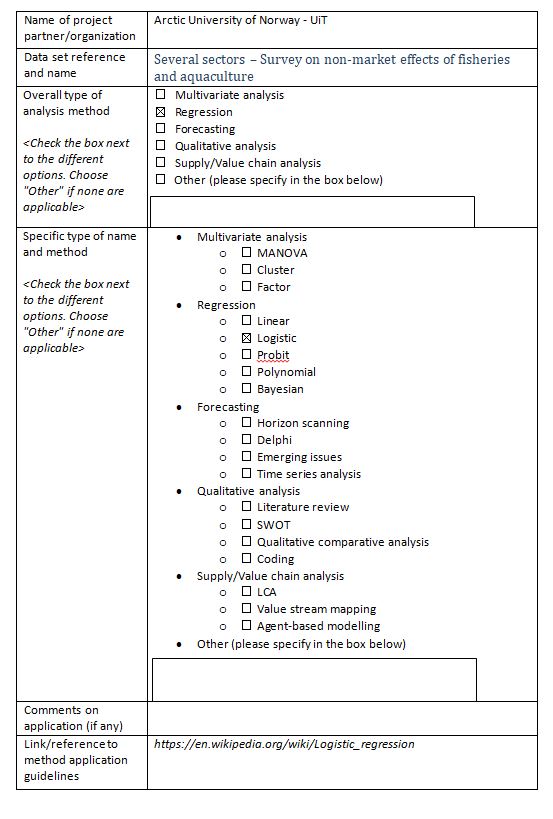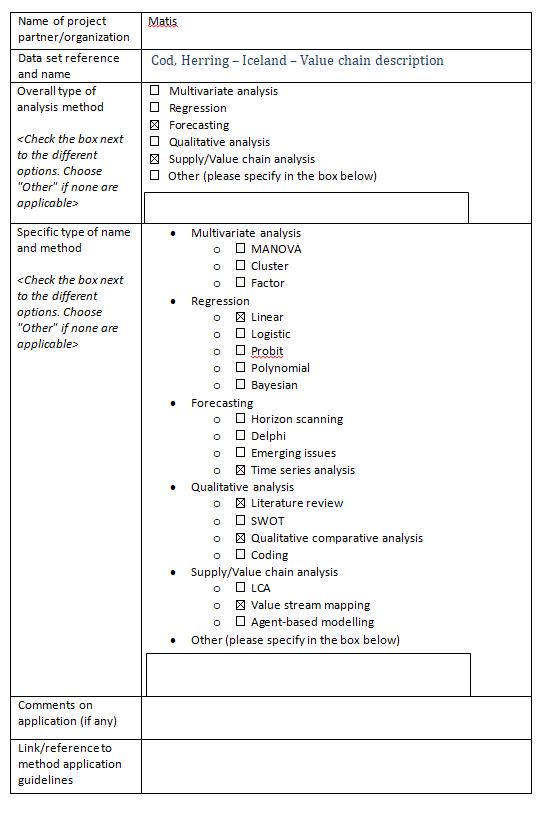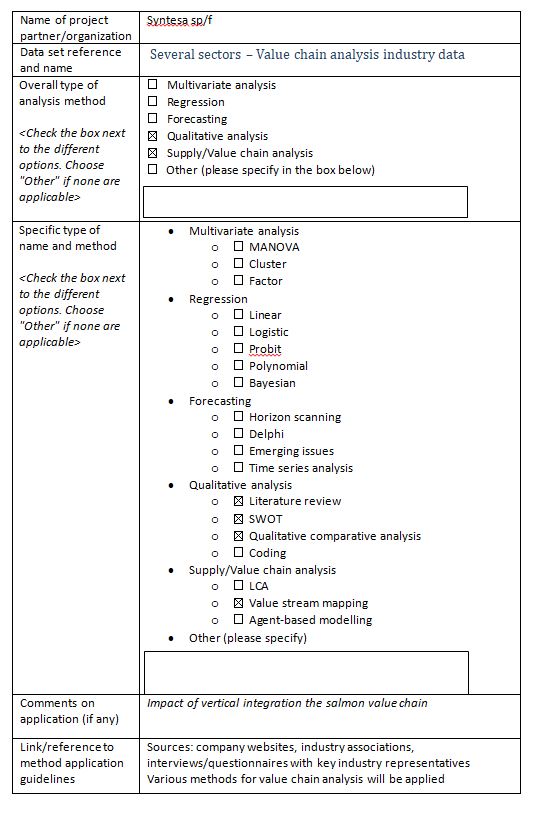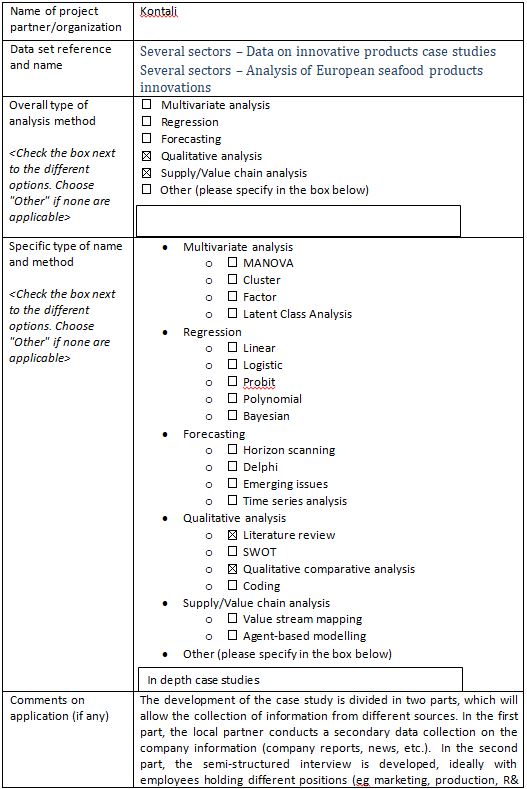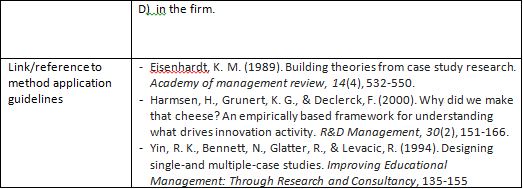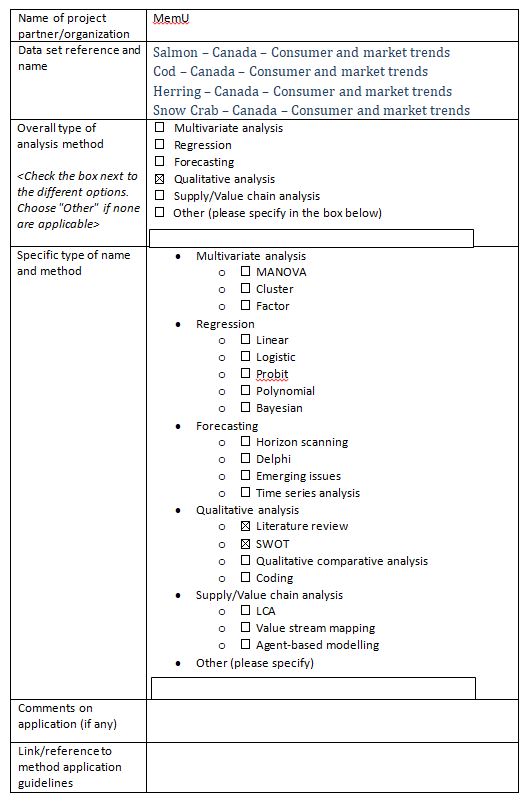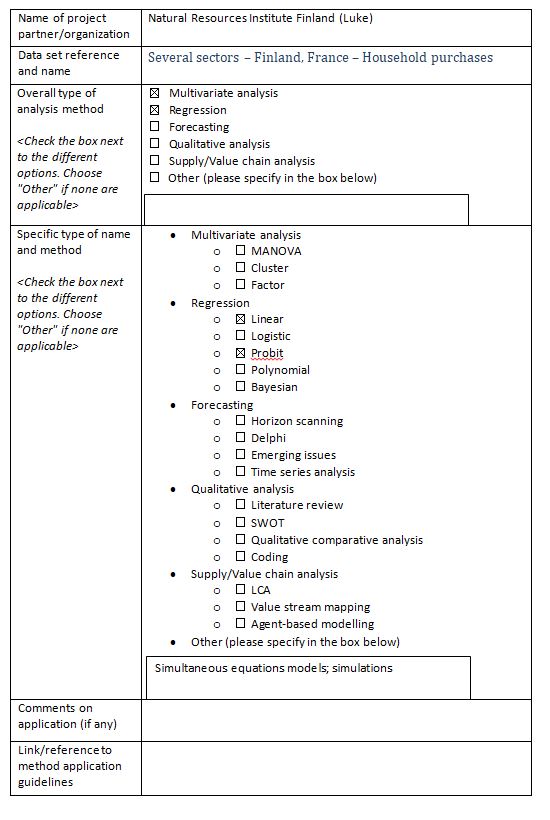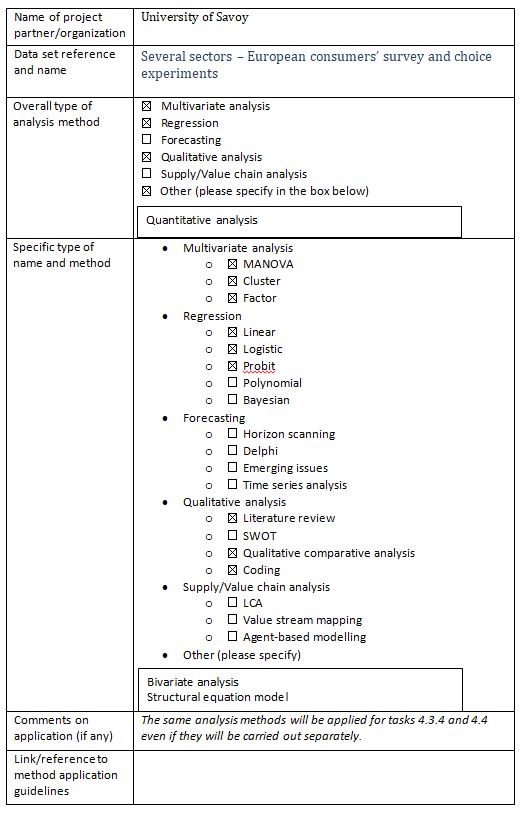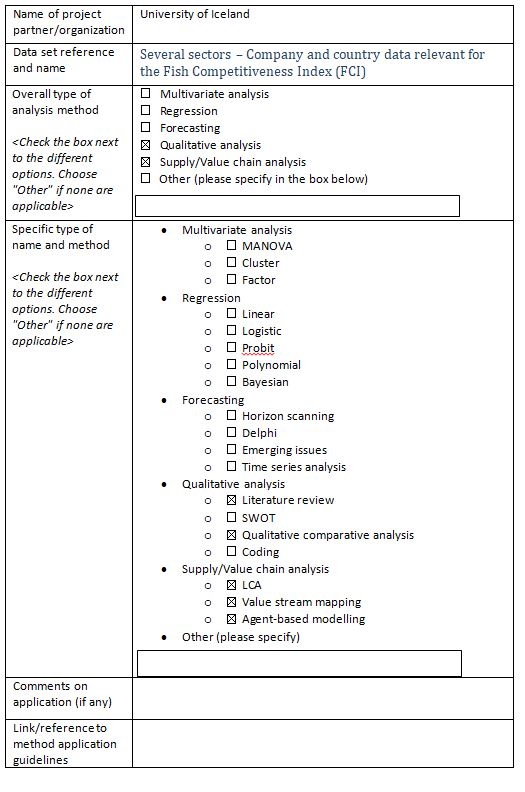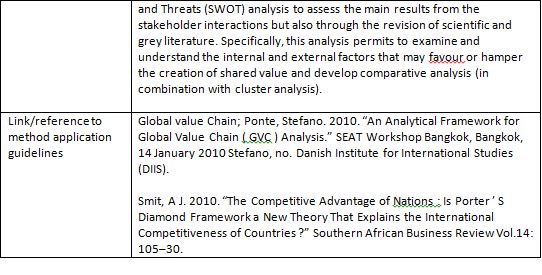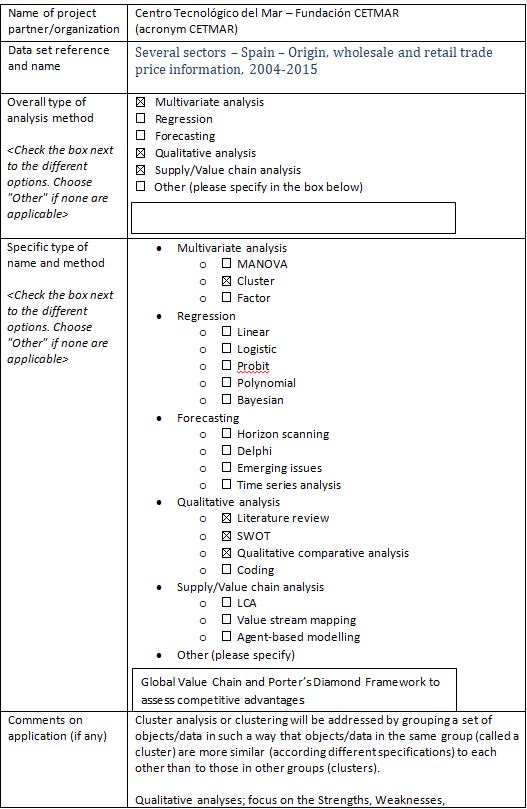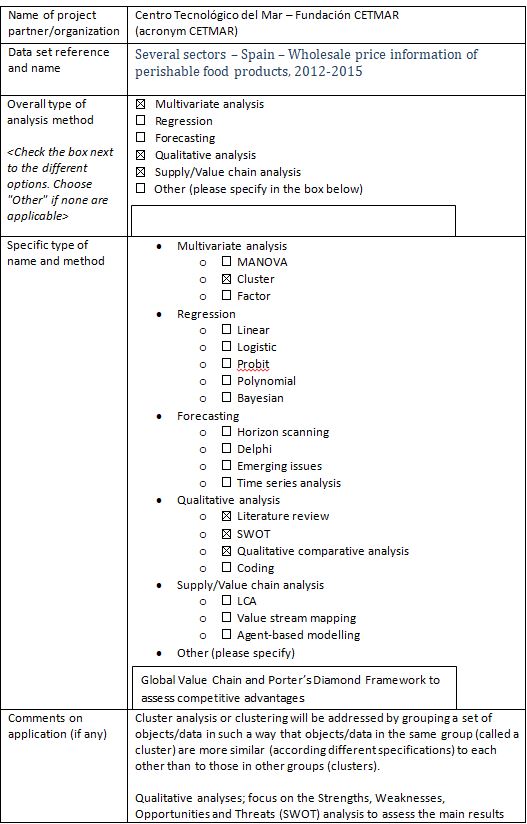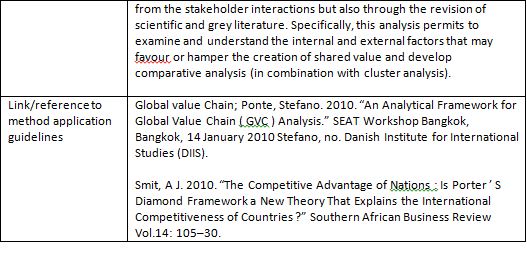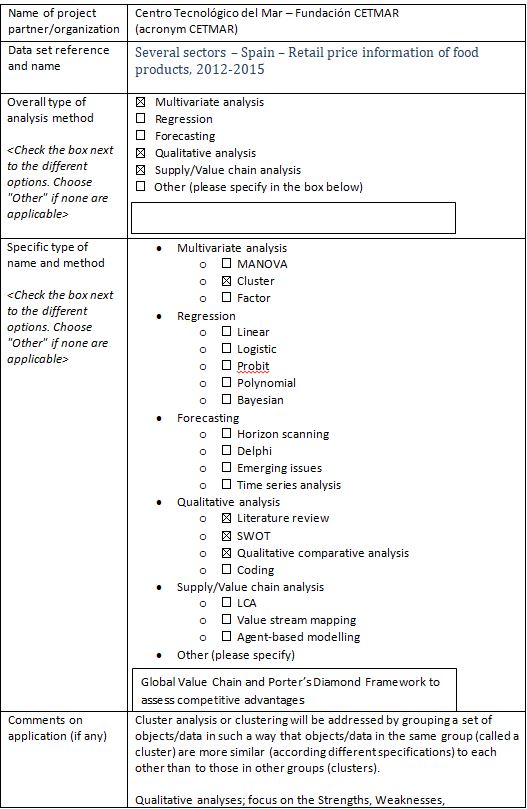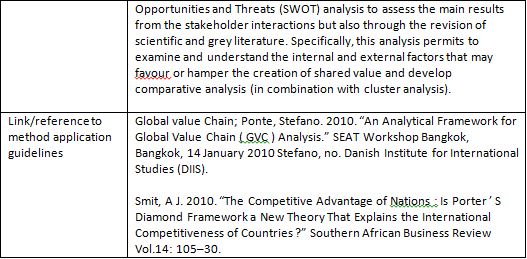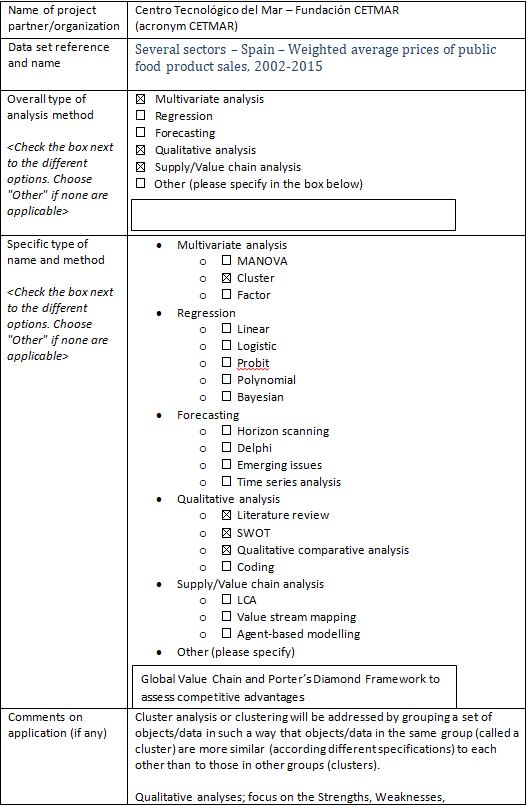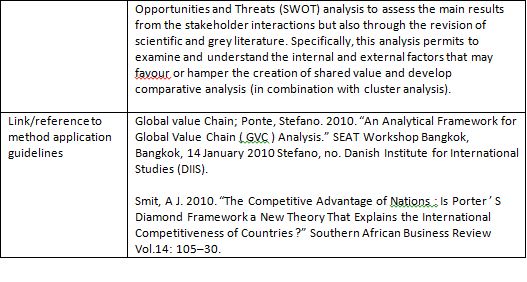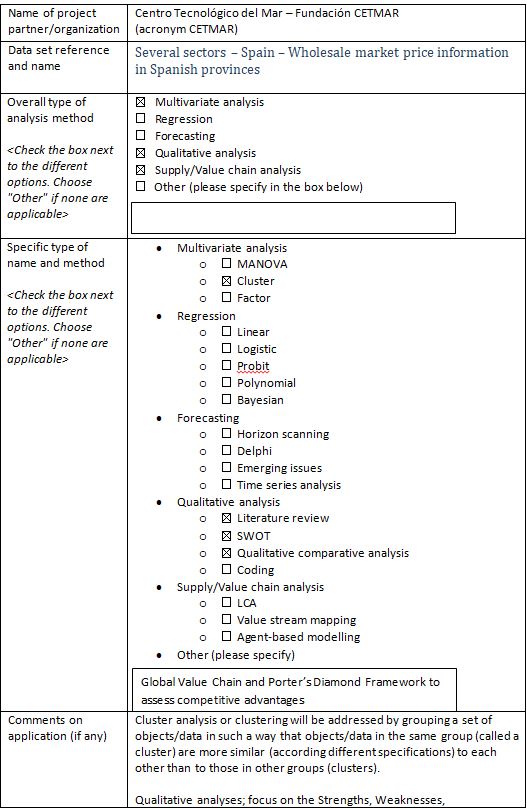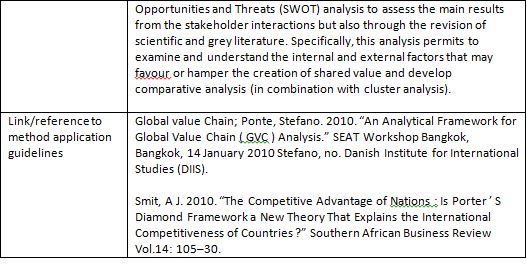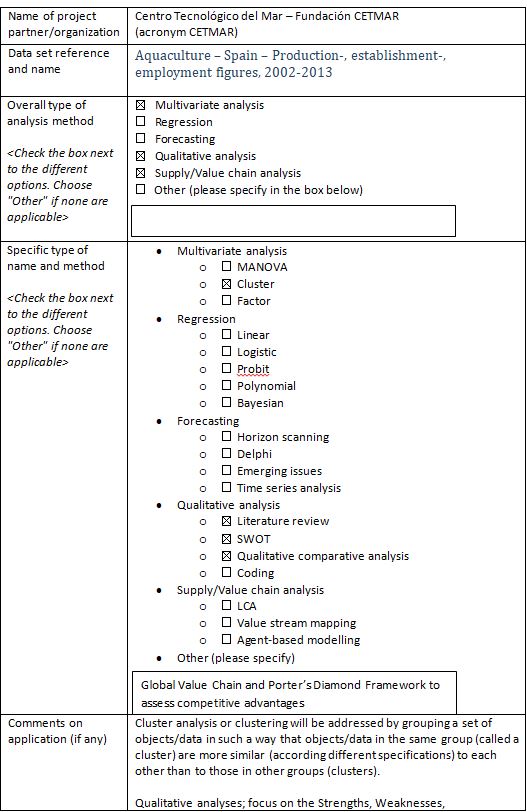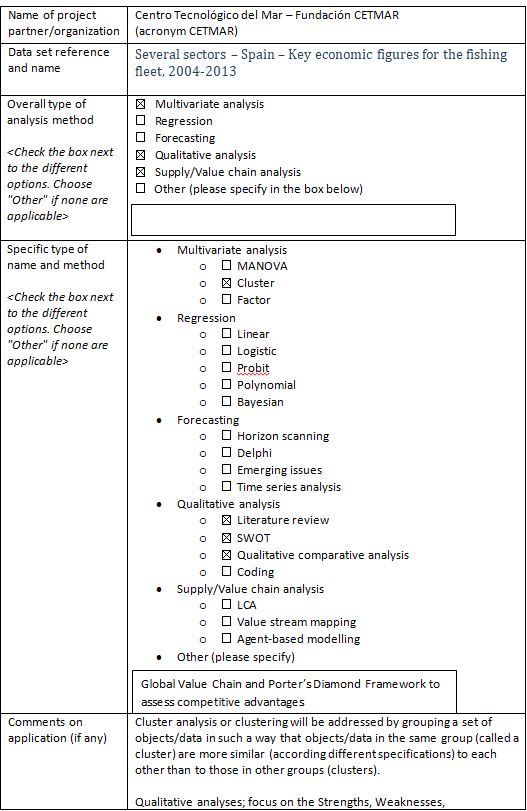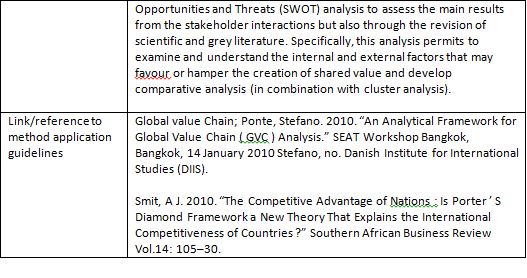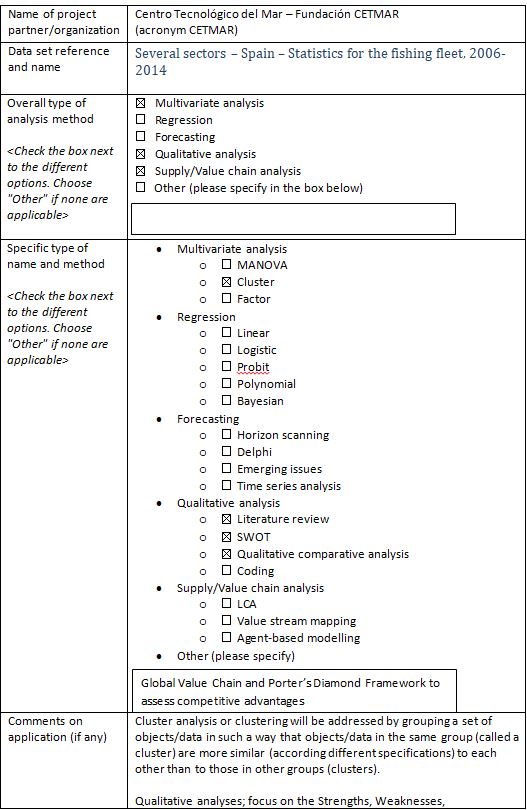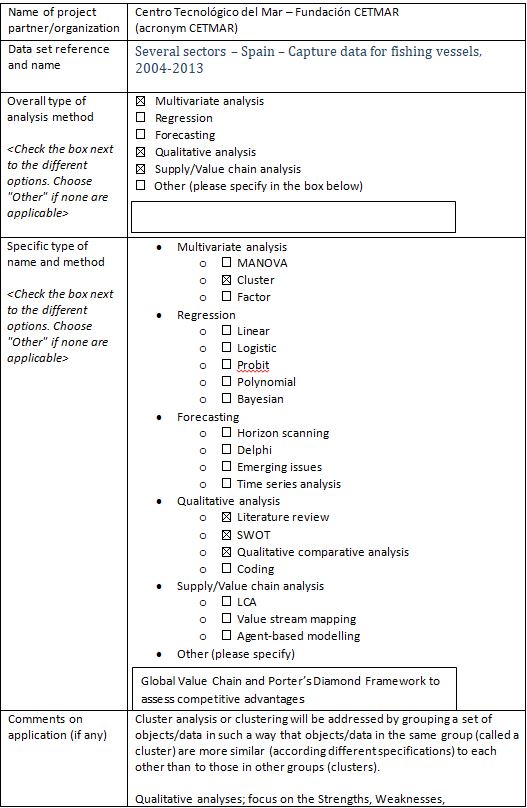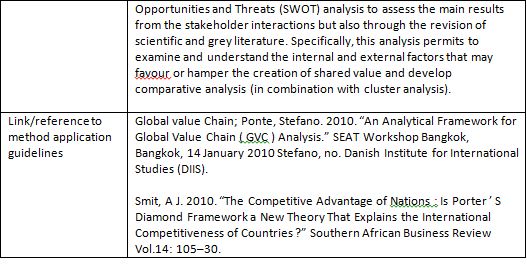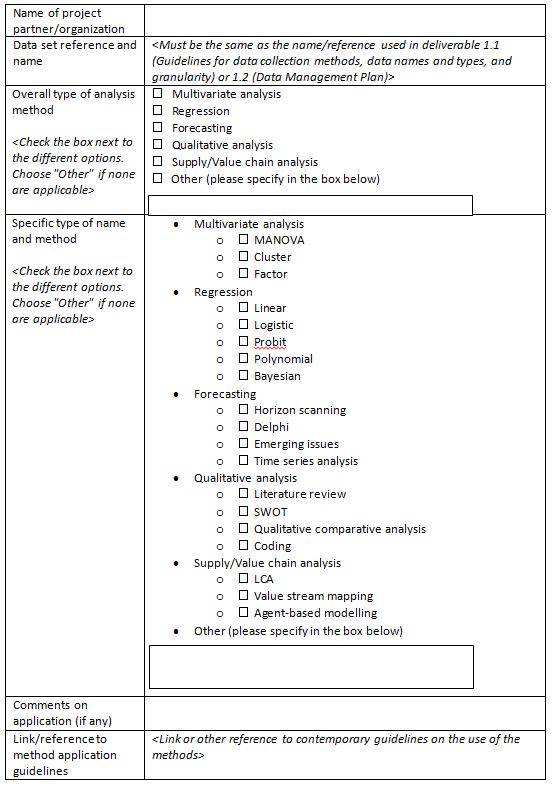Difference between revisions of "Deliverable 1.3"
Jacandrade (talk | contribs) |
Jacandrade (talk | contribs) |
||
| Line 36: | Line 36: | ||
Whilst each form contains the required information, e.i. which methods are used, the amount of supplementary information varies. This can mainly be attributed to the types of methods used. Certain analysis methods might provide little room for alternative approaches, and thus require little or no additional explanation on the way in which the work has been-, or will be carried out. Other analysis methods, on the other hand might allow for a much more open-ended approach. | Whilst each form contains the required information, e.i. which methods are used, the amount of supplementary information varies. This can mainly be attributed to the types of methods used. Certain analysis methods might provide little room for alternative approaches, and thus require little or no additional explanation on the way in which the work has been-, or will be carried out. Other analysis methods, on the other hand might allow for a much more open-ended approach. | ||
| − | + | | |
== Acknowledgements == | == Acknowledgements == | ||
| Line 44: | Line 44: | ||
We wish to thank all the project participants who have contributed to the completion of this deliverable. | We wish to thank all the project participants who have contributed to the completion of this deliverable. | ||
| − | + | | |
== Appendix == | == Appendix == | ||
| Line 131: | Line 131: | ||
===Data Analysis Form – Template=== | ===Data Analysis Form – Template=== | ||
| − | [[File: | + | [[File:D1p3_apx_template.JPG | center | Annex 1 ]] |
Revision as of 20:26, 19 February 2018
Contents
Deliverable D1.3 - Guidelines for data analysis methods, with links to collected data types
Introduction
PrimeFish has a wide scope, namely to "improve the economic sustainability of European fisheries and aquaculture sectors". This will be done by gathering data from "individual production companies, industry and sales organisations, consumers and public sources". Such a wide range of sources produces large amounts of diverse data.
Previous deliverables (D1.1/D1.2) have focused on describing the content of different data sets with regards to data management, -archiving and -sharing, data collection and the use of standards in order to enable harmonisation. This deliverable continues this work and provides a comprehensive overview of the data analysis methods used by the different research groups.
The forms that were provided by the project participants have been included in the appendix of this document. They are grouped according to work package (WP) number. Where possible, the forms are grouped in the same order that is found in deliverables 1.1 and 1.2. However, in the two mentioned deliverables, one form was used for each data set. In this deliverable, several data sets can be grouped in the same form provided they use the same analysis methods. Certain data sets might also be used either in different work packages or by different organizations, meaning they are mentioned more than once. For these reasons, the number of forms in this deliverable will not be identical to the number in the previous deliverables; neither will the order in which they appear.
Methods
In order to obtain the information needed, a form detailing the required information was created and distributed among the project participants. Detailed instructions on how to fill out the form was included in the accompanying e-mail. The form contained a predefined list of different methods categorized under the main headings "Regression; Multivariate; Forecasting; Qualitative; Supply/Value chain analysis". Each header contained between three to five different methods, and participants were asked to tick the box next to each applicable method. The list of possible methods was compiled through a literature review of similar studies as well as method guidelines. The list was not exhaustive, meaning participants also had the option to choose "Other" should none of the options be applicable, and to specify further in a text field.
The form contained optional fields were participants were invited to provide comments on the application of their method of choice, or to provide links and/or other references to contemporary guidelines for the use of the method(s) in question, such as seminal works or similar. In order to provide a link to the type of data used, the forms use the same data set name/reference as was used in deliverables 1.1 and 1.2 ("Guidelines on data collection methods", and the "Data Management Plan", respectively).
The form issued is included in the appendix.
Conclusion
Deliverable 1.3 "Guidelines on data analysis methods" provides a thorough overview of the different analysis methods that the project participants will make use of over the course of the project. This comprehensive summary will act as a tool enabling participants to gain an insight into the strategies applied by others, and can help researchers working with similar data types to coordinate their efforts in order to ensure a more harmonious final product. This harmonisation of strategies and effort is enabled further through the use of a standardised form containing predefined lists of choices.
Whilst each form contains the required information, e.i. which methods are used, the amount of supplementary information varies. This can mainly be attributed to the types of methods used. Certain analysis methods might provide little room for alternative approaches, and thus require little or no additional explanation on the way in which the work has been-, or will be carried out. Other analysis methods, on the other hand might allow for a much more open-ended approach.
Acknowledgements
We wish to thank all the project participants who have contributed to the completion of this deliverable.

